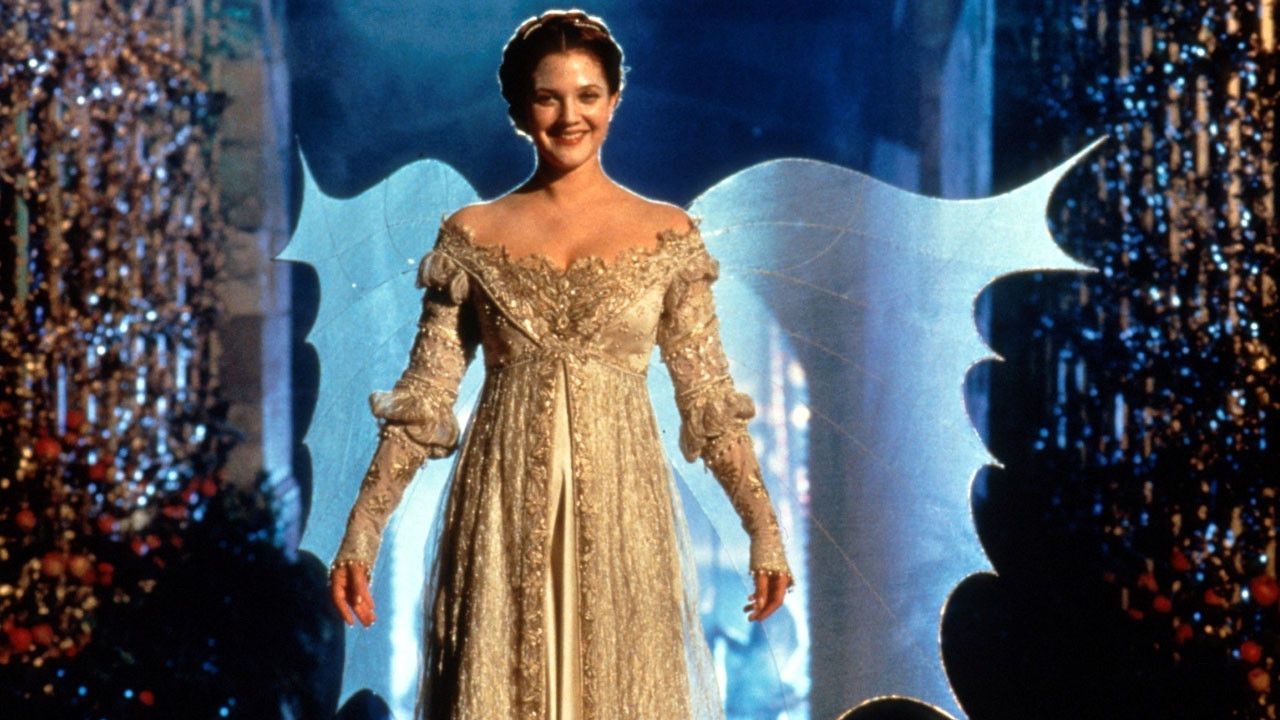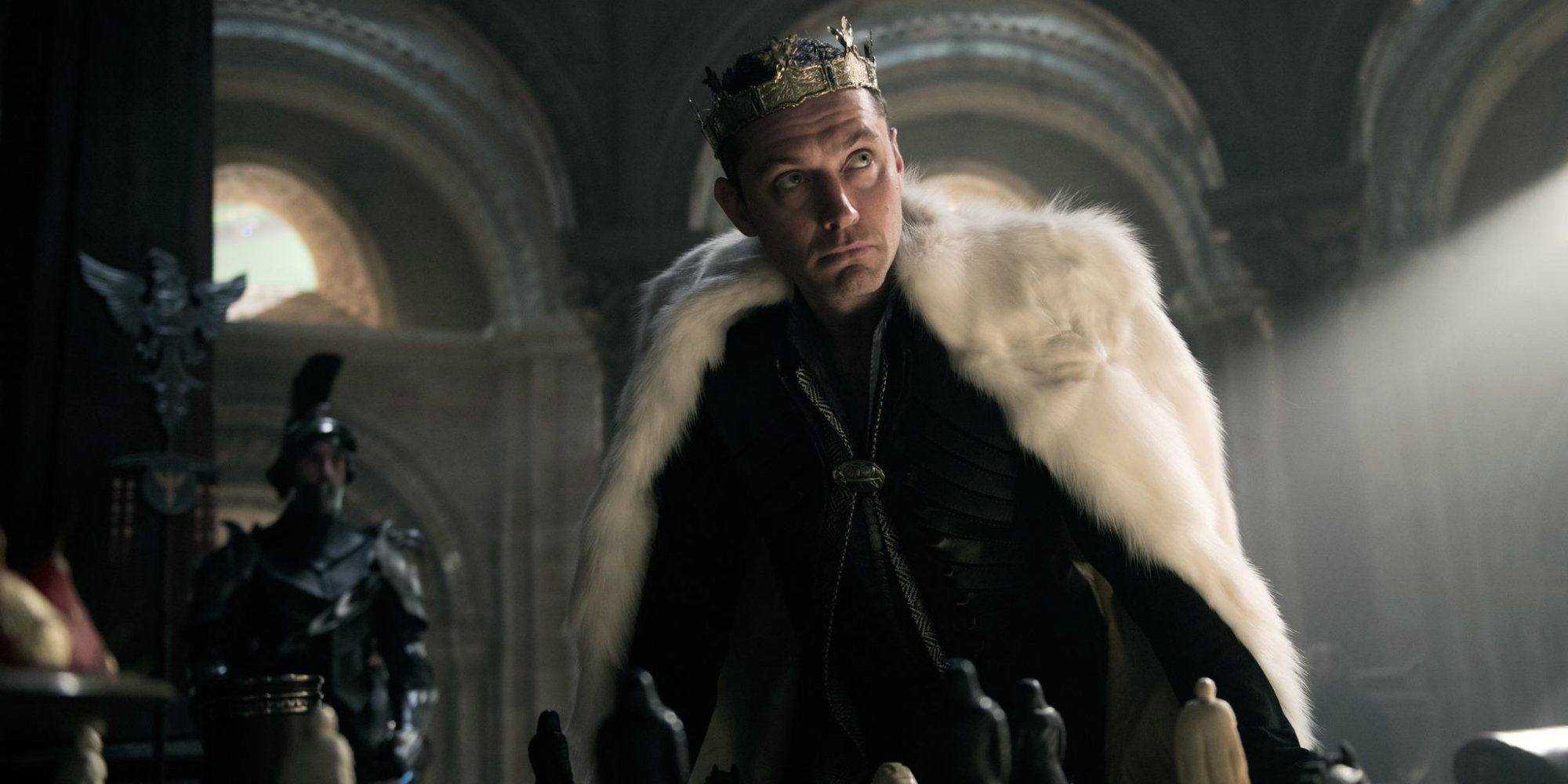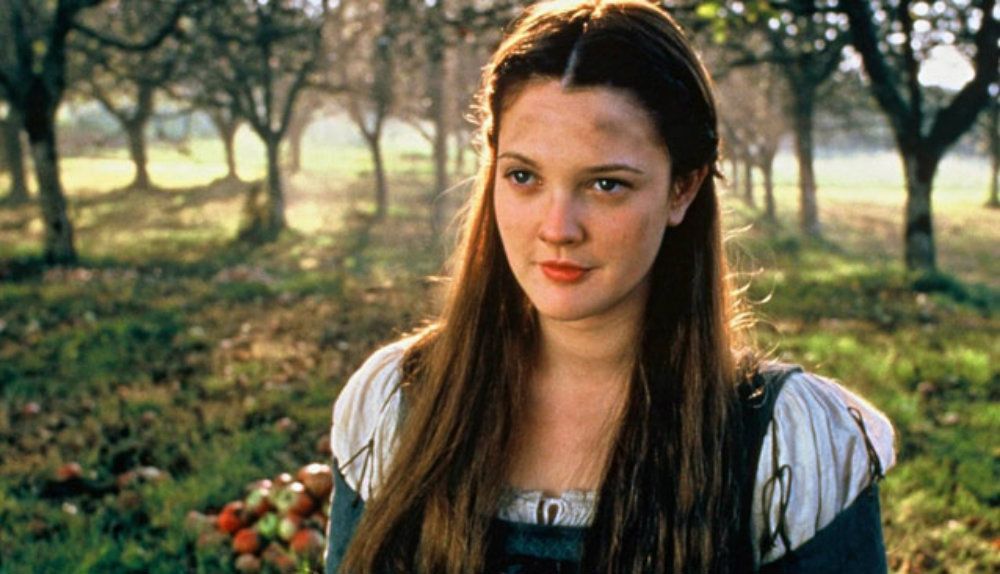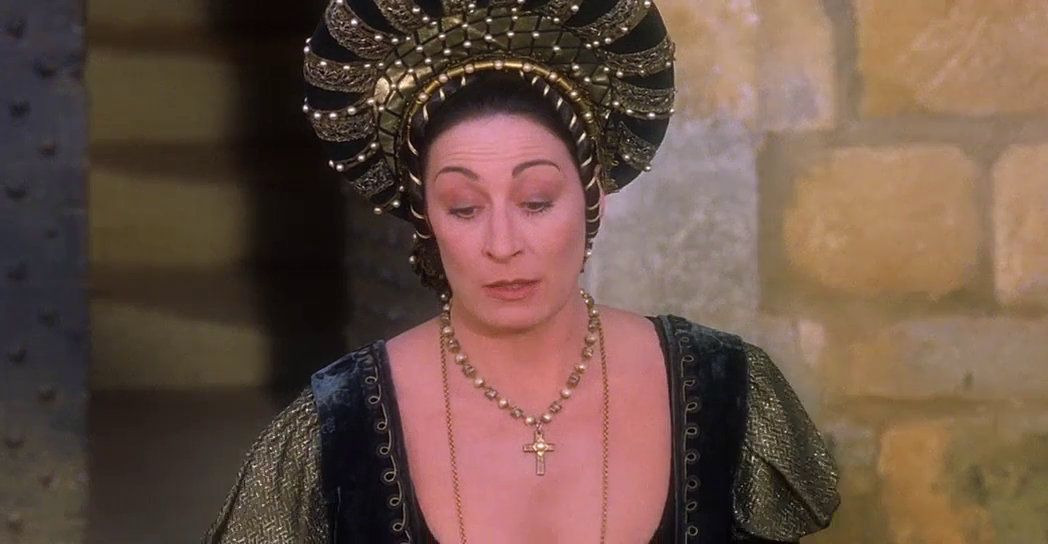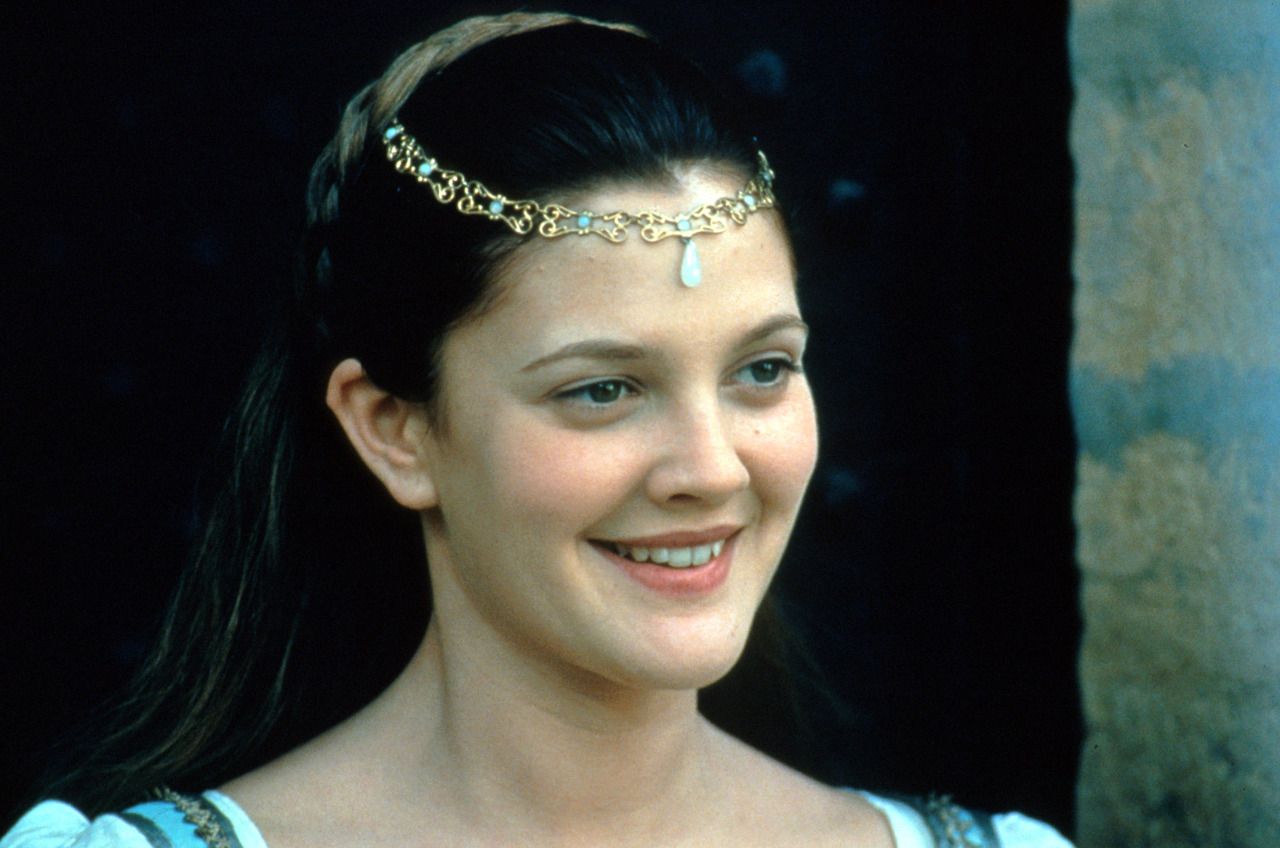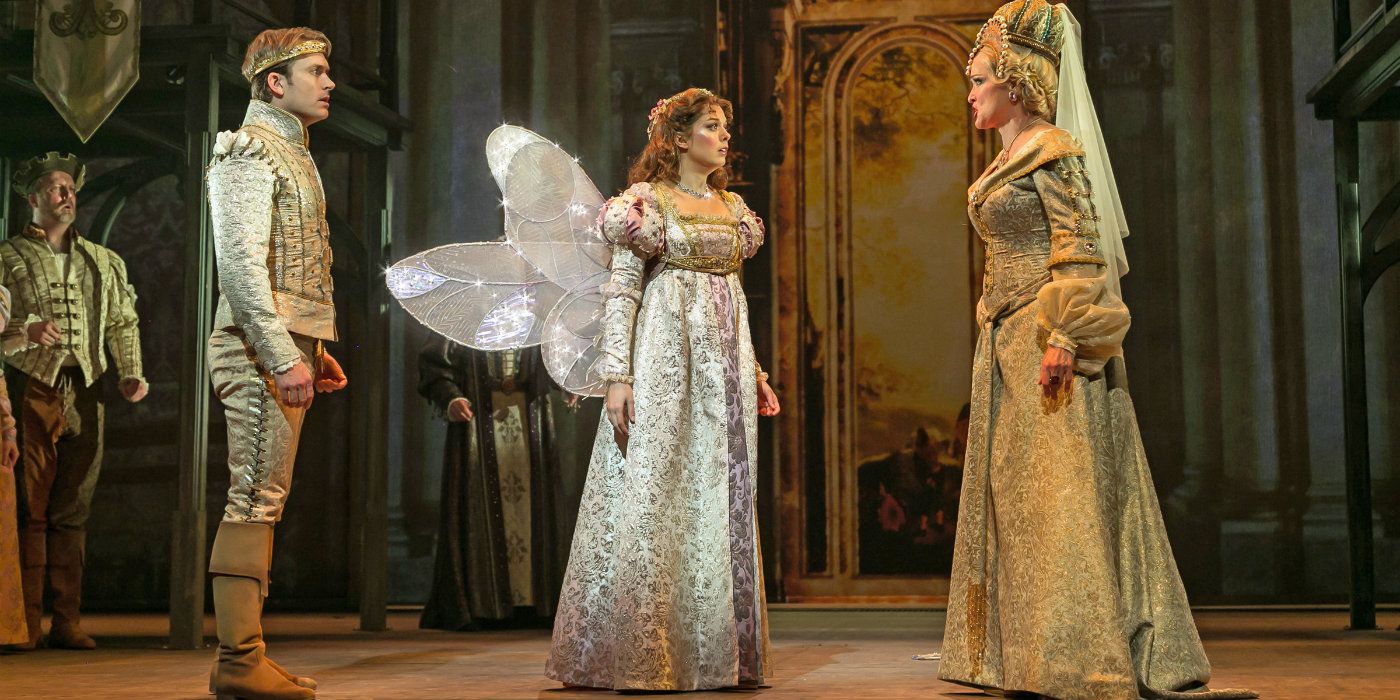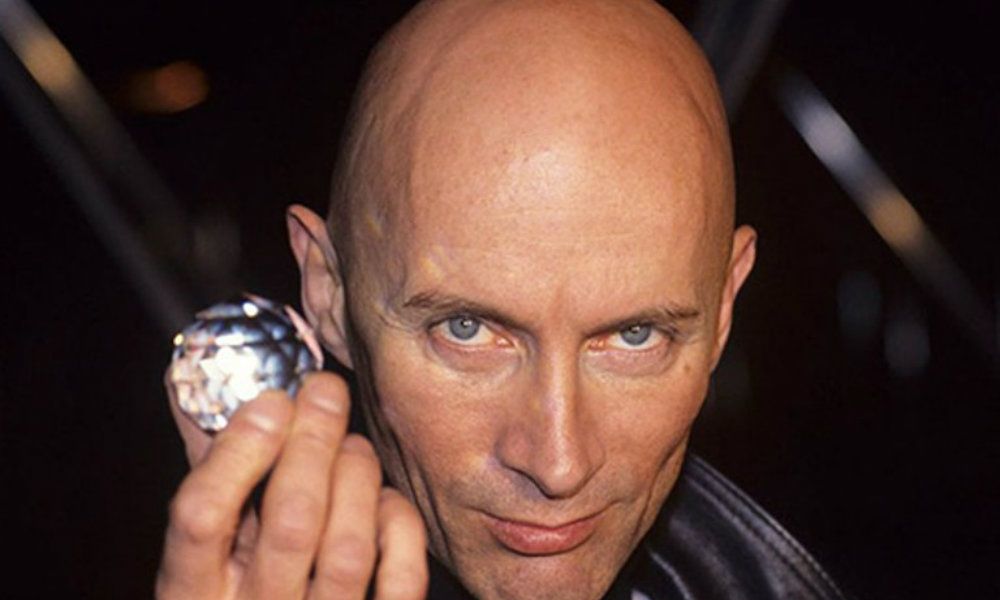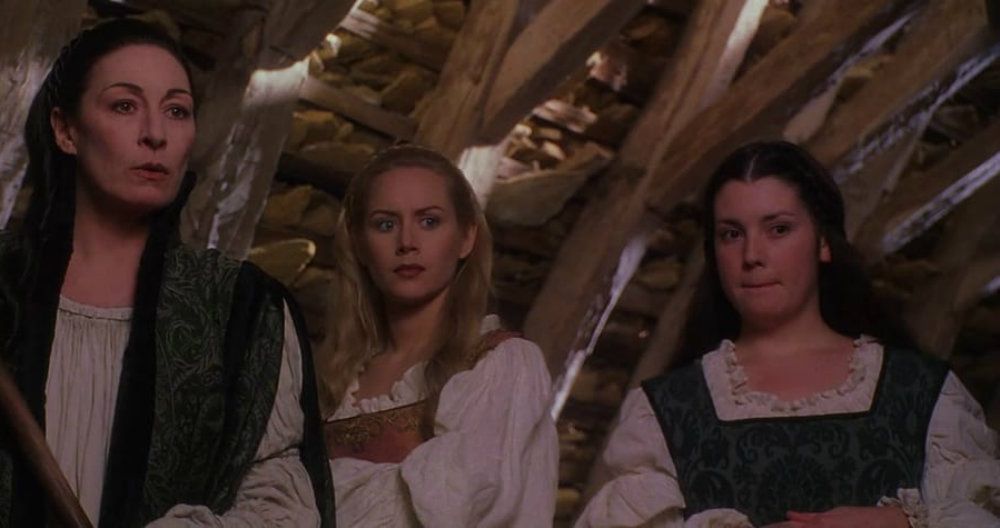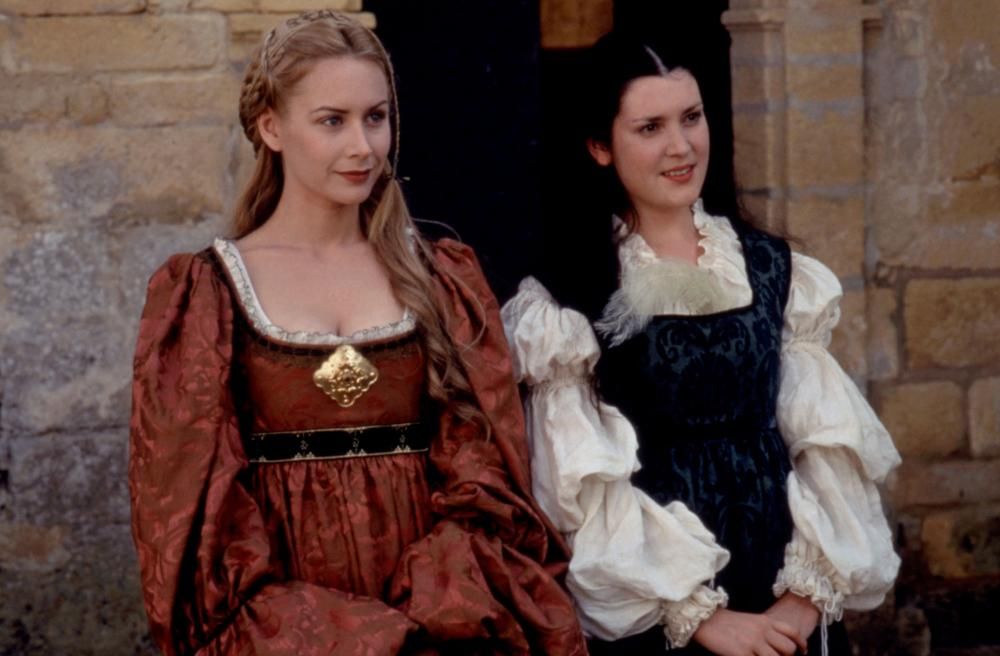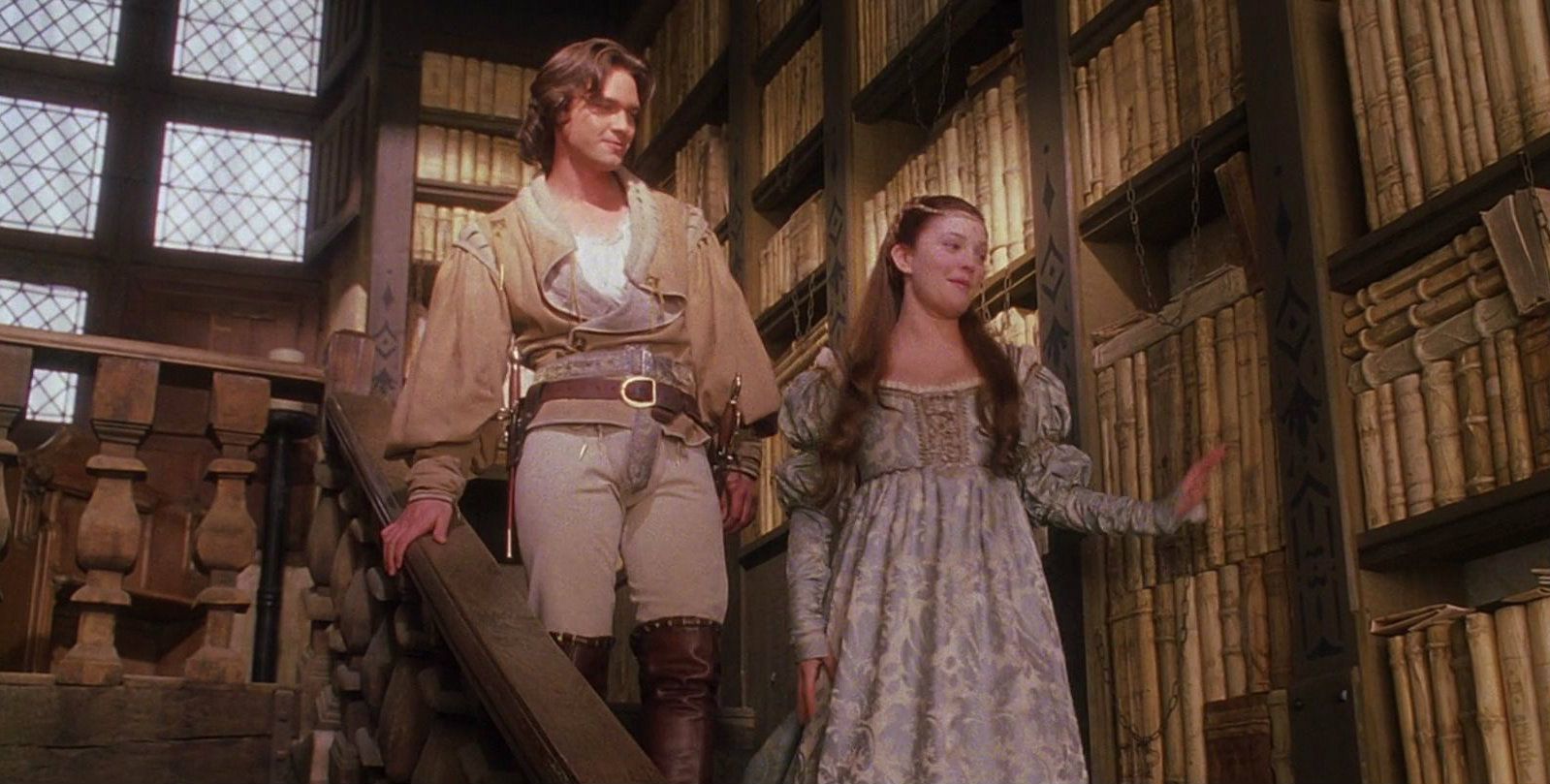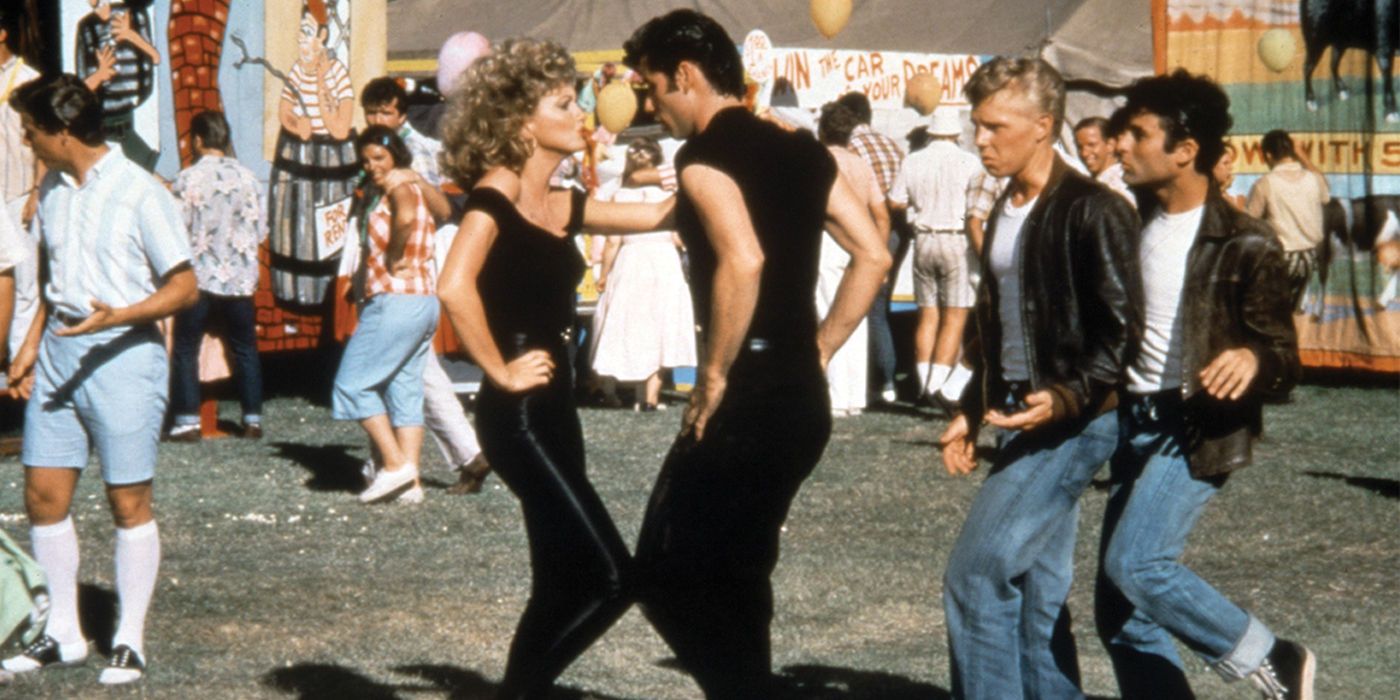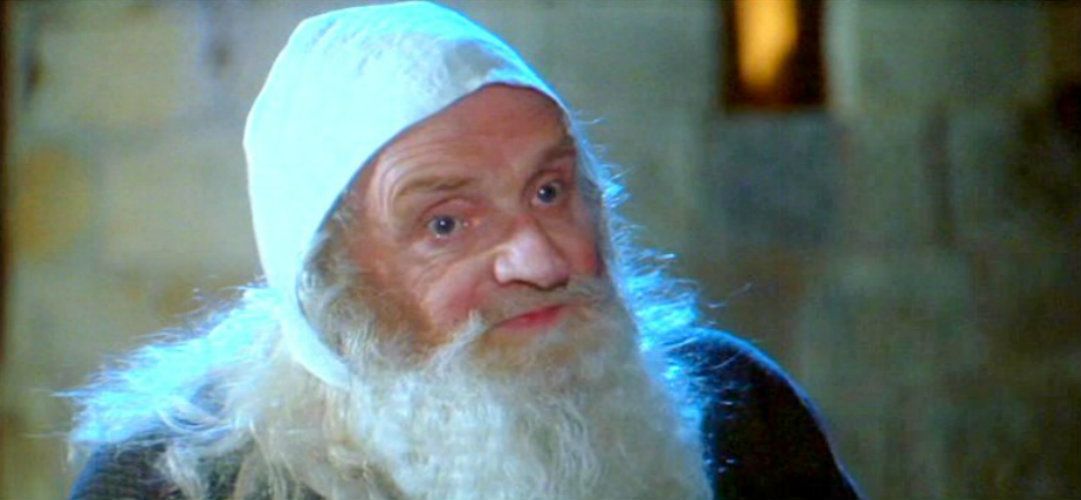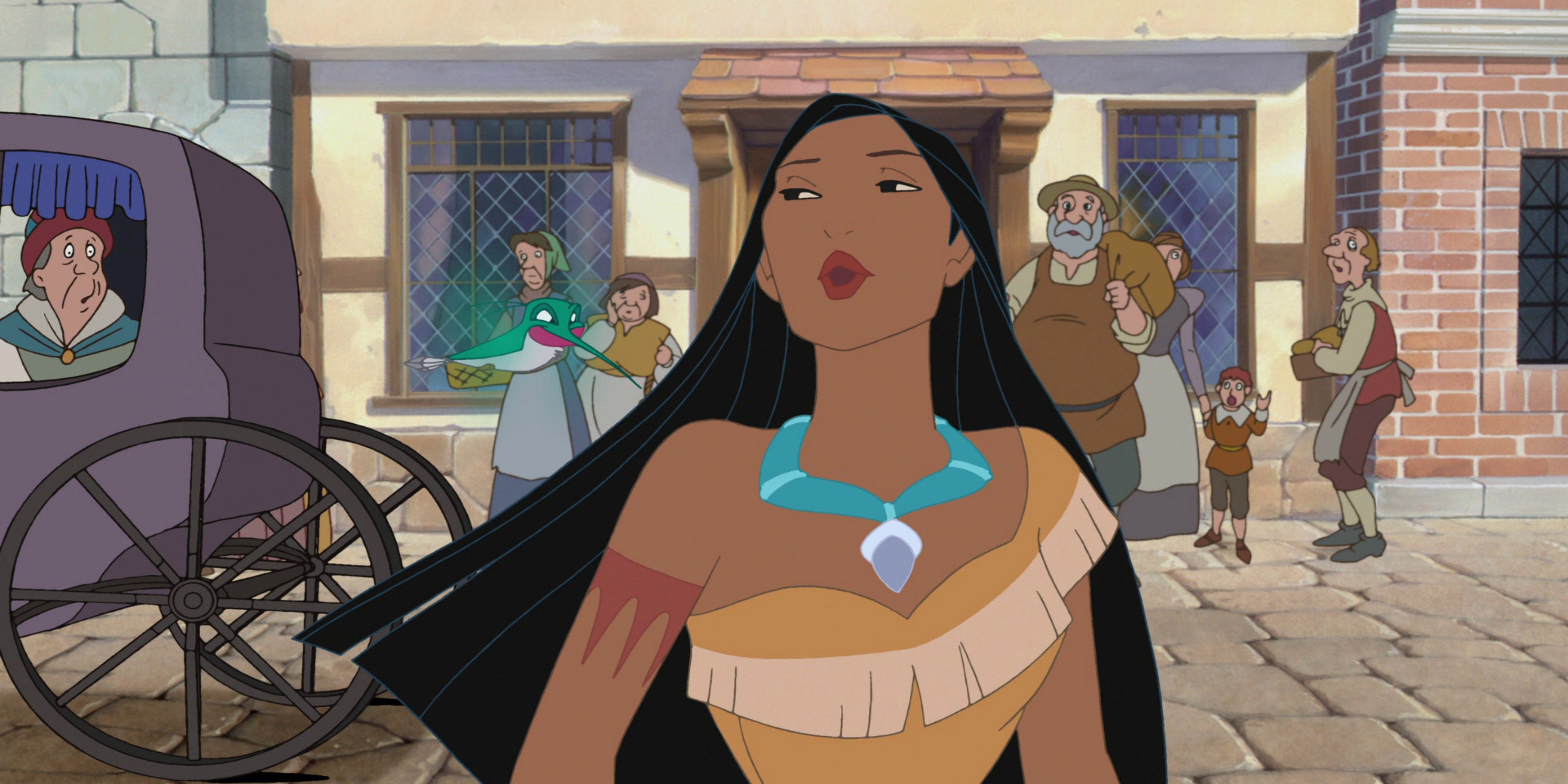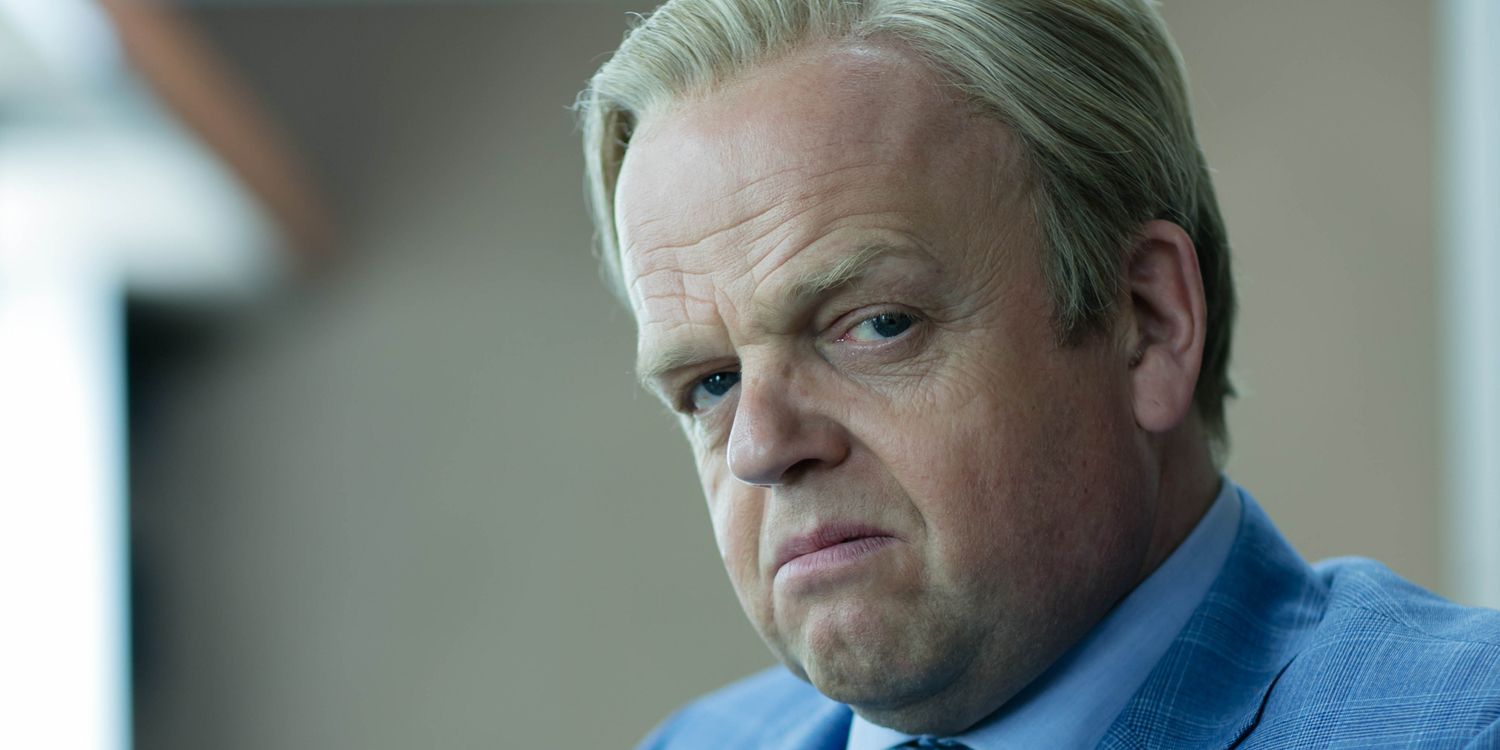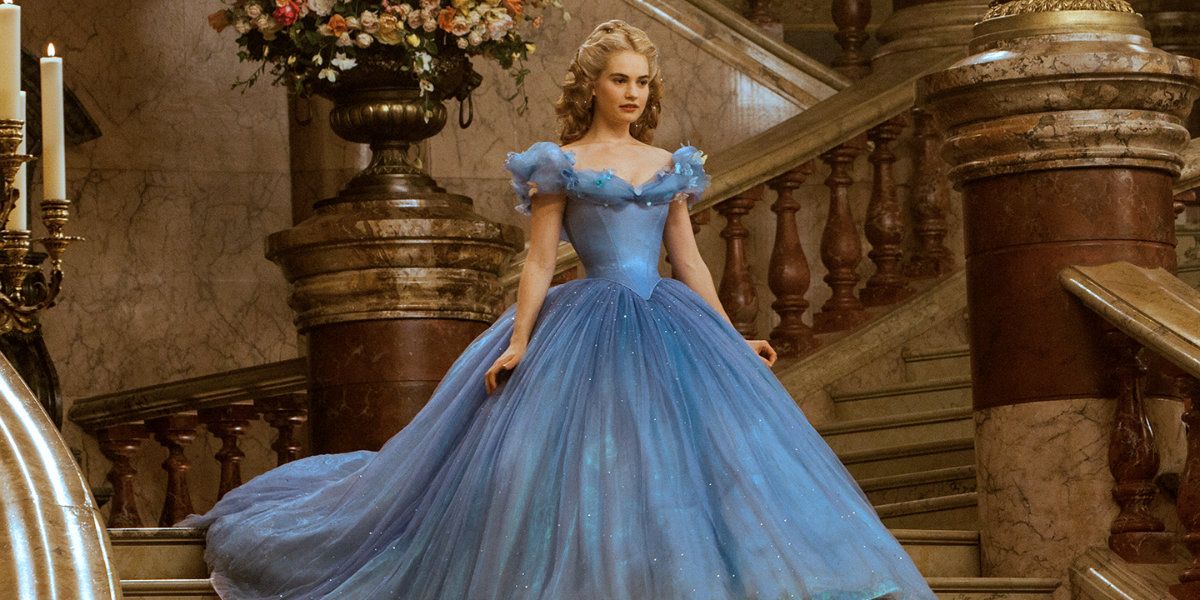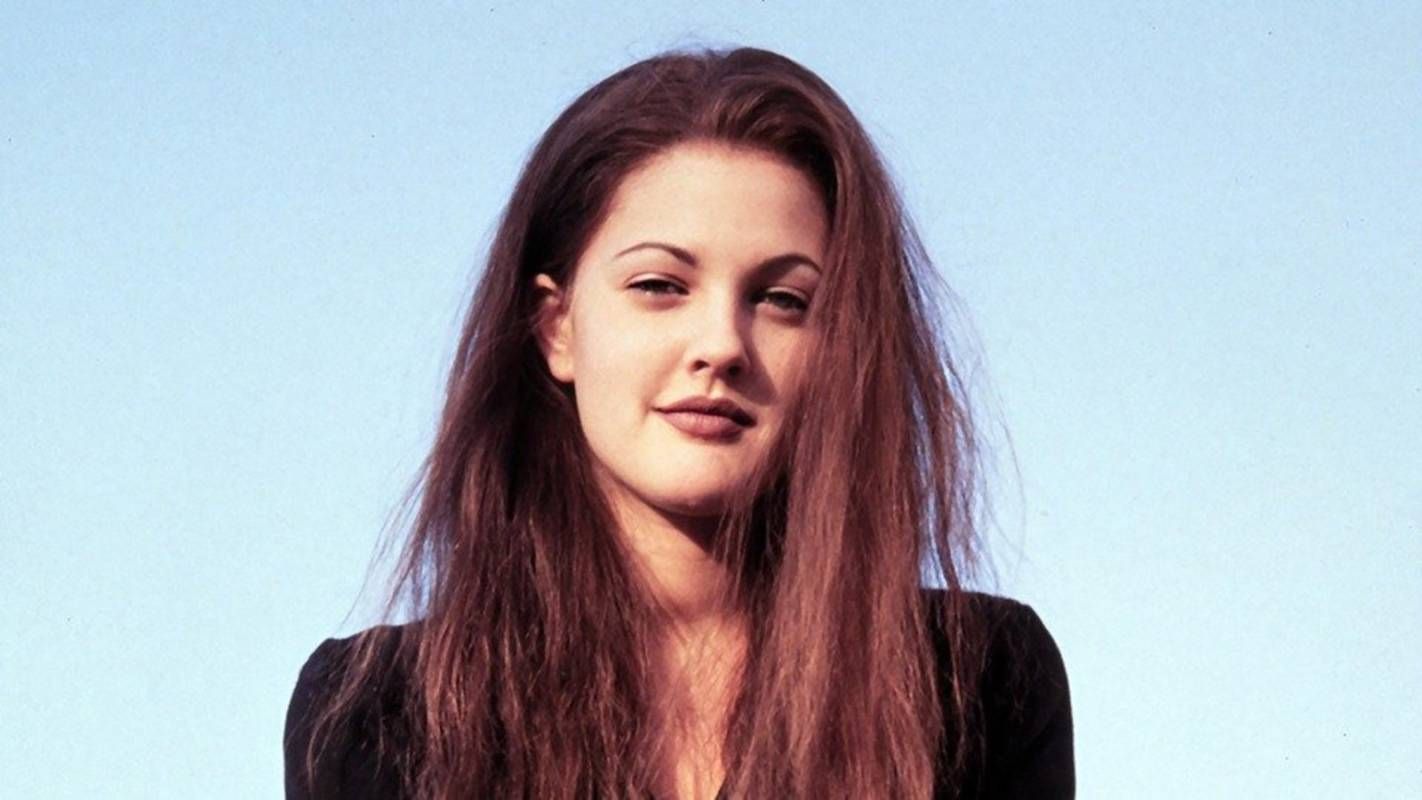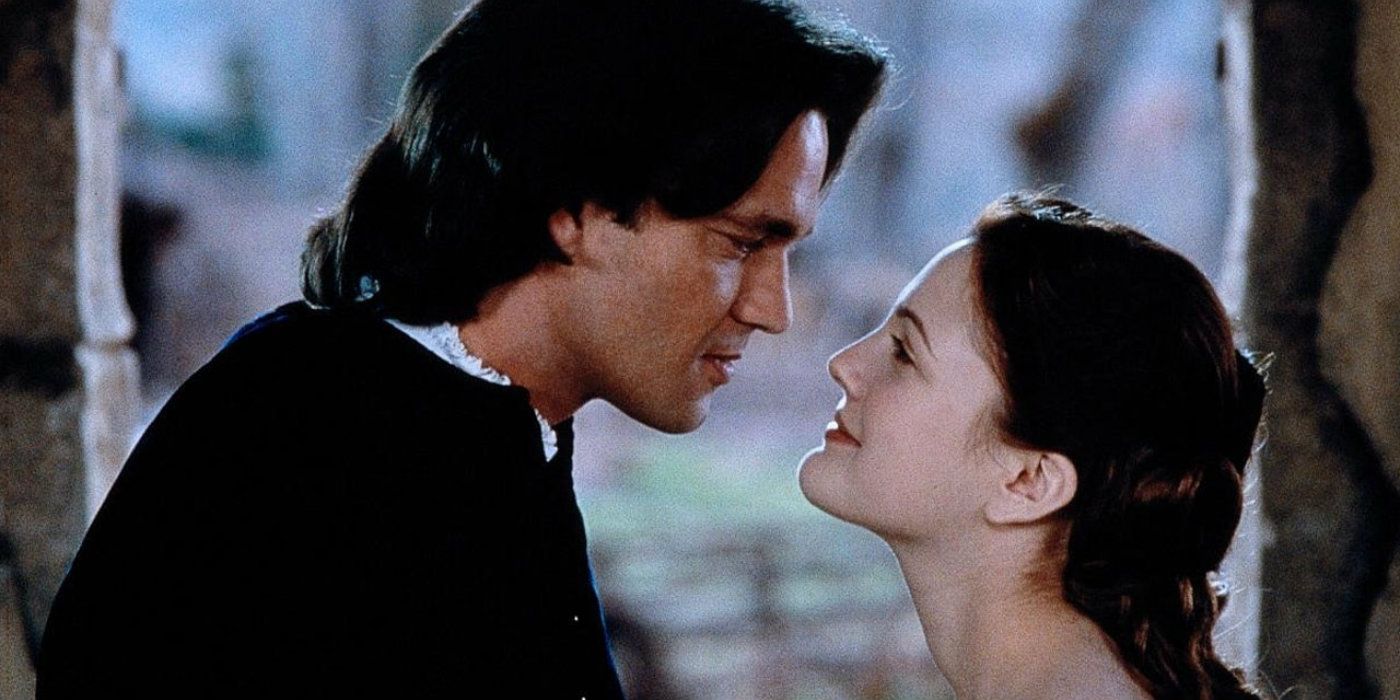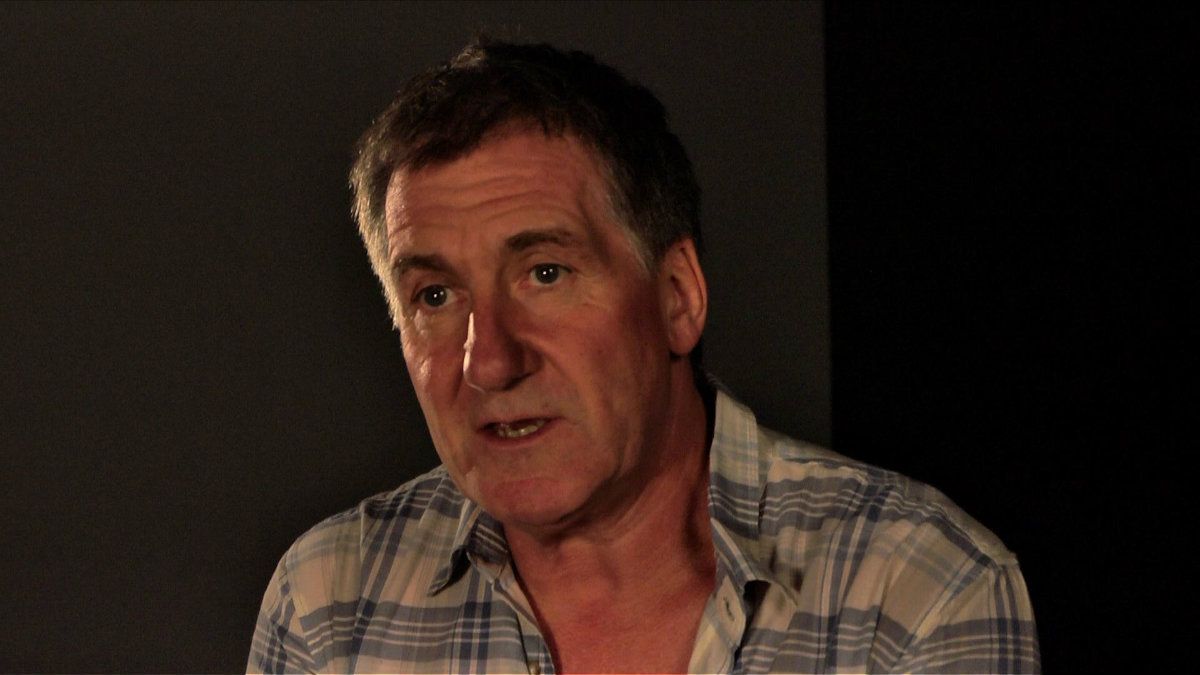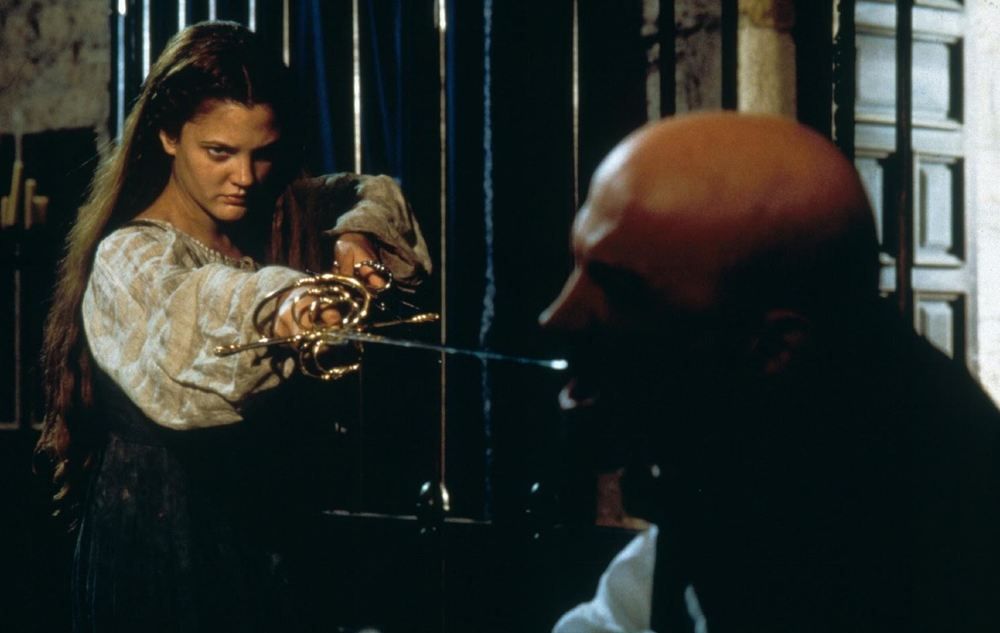When most people hear Cinderella, the first thing they picture is the classic 1950 Walt Disney animated version. That said, some people's minds might go to one of the literally dozens of other feature film adaptations of the folk tale that has been credited to a number of writers but is most well-known by the Charles Perrault and Brothers Grimm versions. If you were of a certain age in 1998, you may very well consider Ever After: A Cinderella Story to be your go-to cinematic interpretation of the classic tale.
Starring Drew Barrymore as Danielle de Barbarac-- its version of Cinderella-- Ever After actually begins with the Brothers Grimm discussing the tale, framing this French Renaissance-with-a-modern-twist take on the well-known story. While there are a lot of elements that will be familiar to anyone who knows the Cinderella story-- glass slippers, cruel stepsisters, and a prince looking for love-- Ever After is anything but another cliched retelling of the well-worn tale.
Other than its unique setting and the name change of its protagonist, the movie also sets itself apart by featuring a number of famous historical figures within the story itself, including Leonardo da Vinci, King Francis, and Prince Henry. Like any good reinterpretation of a famous story, Ever After does a nice job of blending familiar elements and new ideas in order to equally appeal to fans of the original tale and those who have grown bored of it. Even with many newer Cinderella movies released since, Ever After remains one of the best-loved film adaptations of the classic story.
Here are 20 Crazy Facts Behind The Making Of Ever After.
It Almost Starred Jude Law
Ever After was easily the big breakthrough role for actor Dougray Scott, who within a few years would be playing the lead villain in Mission: Impossible 2 and was in contention to play both Wolverine in the X-Men movie and be the next James Bond after Pierce Brosnan. Although those latter two opportunities obviously fell through for various reasons, it definitely speaks to his post-Ever After star power at the time that he was even being considered for such big parts.
And to think that Scott almost didn't even get the role of Prince Henry at all! Reportedly, he was at least the third actor offered the role after it was declined by both Jude Law and Jonny Lee Miller (Trainspotting, Elementary).
It's Drew Barrymore's Favorite Role
Even though she is only 43-years-old, Drew Barrymore is already a certified Hollywood veteran with acting credits going all the way back to 1980, when the actress made her film debut at age five in Altered States. Since then, she has had as varied a career as anyone can, appearing in projects in just about every genre and budget size imaginable in both film and television.
With a resume that includes beloved films like E.T., Scream, Boys on the Side, The Wedding Singer, Donnie Darko, and many others, how can Barrymore even begin to pick a favorite? Well, it turns out she has, and it's Ever After-- at least according to a 2016 interview.
She said her reaction to the script and the character of Danielle was, "That's who I want to be, that's who I need to be in this life."
It Earned Anjelica Huston An Embarrassing Nomination
Anjelica Huston is a third-generation Hollywood actor-- like Drew Barrymore, coincidentally. She is among the most celebrated film actors of all time. Her acclaimed body of work is almost unrivaled, as has been her ability to remain a steadily working actress well into her 60s.
Huston has been nominated for/and or won just about every prestigious award that is available to film actors-- but thanks to Ever After, she also added an unfortunate one to that list. In the debut year of Fox's Teen Choice Awards, Huston was nominated for her work as Ever After's villain-- via a cringe-worthy award called "Choice Sleazebag."
It's one award she was probably thankful not to win.
Sarah Michelle Gellar took it for Cruel Intentions-- and the award itself was thankfully renamed "Choice Villain" in later years.
Danielle's mask
A fan-favorite scene in Ever After is when Danielle attends the ball, and she shows up with gorgeous make up and those shimmery wings. It was such a big moment for the character that, according to Drew Barrymore, Leonardo da Vinci himself was to be the one to apply Danielle's make-up for the scene in the original script.
Barrymore joked that her make-up artist was sick for months over the idea that she had to do make-up that looked good enough to have been applied by da Vinci.
In the movie itself, they ended up going another way, which involved da Vinci not doing the make-up and Danielle's face having a far more subtle look than da Vinci might have done, had he been the one to do her makeover.
There's a musical version
While it took about a decade, it was eventually revealed that Ever After was to be adapted into a live musical. Originally planned to have its debut as early as 2009, the Ever After musical experienced several delays before it finally hit the stage in May of 2015.
That initial run-- which only lasted a month-- saw Sierra Boggess (who played Ariel in Broadway's The Little Mermaid) take on Drew Barrymore's role. In spite of its seemingly troubled history, the world hasn't given up on the Ever After musical just yet, as another production of the show is set to debut in January 2019 and will feature The Nanny's Charles Shaughnessy in the role of King Francis.
The Rocky Horror Picture Show Connection
In addition to featuring a number of actors that were then up-and-comers who are now more established, the cast of Ever After also had its share of veteran performers who had been around for decades.
One of the more interesting examples is Richard O'Brien, who played the hilariously named Pierre le Pieu.
If you couldn't quite put your finger on what you know him from, it's probably much clearer in the picture above when he is out of his hat and facial hair. O'Brien is none other than the creator and one of the stars of cult classic The Rocky Horror Picture Show. Ever After is actually something of a rare mainstream role for O'Brien, who has spent much of his career doing smaller projects.
A Fine Line Between PG and PG-13
When movies come to DVD or Blu-Ray, they are often "unrated," which means that they have more violence, more swearing, and/or more skin than the theatrical version. It's generally only a movie's transition to television that sees its content get neutered rather than the other way around.
However, when Ever After came to VHS, it was decided that it should be edited to pare its original PG-13 rating down to just PG, with the thinking being that more parents would buy it for their kids. So what needed to be done to earn that new rating? Apparently, it only took the removal of a whopping three curse words in order to satisfy the MPAA's requirements for a PG movie.
It makes us wonder why they didn't just do that in the first place if a wider audience was their goal.
The Ending Is Darker Than It Seems
Not surprisingly, there is plenty of dark stuff in the Brothers Grimm's version of Cinderella that makes us wonder how it was ever actually intended for children. Easily the most unsettling moment of that version is the ending, where Cinderella's stepsisters' eyes are plucked out by doves, leaving them blinded as punishment for their deeds.
As family-friendly as Ever After is, its ending actually alludes to that same fate for Danielle's stepsisters.
At the end of the movie, they have been banished to do the laundry for the royal palace.
It wasn't lost on the writers of the movie that the chemicals used in cleaning clothes in those days would often result in blindness after prolonged exposure.
Historical Inaccuracy
One of the things that seems to set Ever After apart from other Cinderella stories is that it dabbles in historical fiction rather than being entirely made up. Not only do the Brothers Grimm make their appearance in the beginning, but even in the actual story itself there are famous names like Leonardo da Vinci, Prince Henry, and King Francis.
There's just one small problem: the movie is set in the year 1512, at which time Francis I was only 18-years-old and not yet king. He also had a different wife in that year than he does in the movie. Obviously, this means that Prince Henry would've only been a child.
Clearly the movie only uses the names and little else about the real people.
The Grease Connection
Director Andy Tennant had a pretty interesting start to his directing career, making his debut with the Olsen twins comedy It Takes Two and then following that up with Matthew Perry/Salma Hayek rom-com Fools Rush In before scoring his first critical success with Ever After. But it was his pre-directing movie career that is even more fascinating.
Tennant first entered Hollywood as a dancer, first in Grease and then in Sgt. Pepper's Lonely Heart's Club Band.
He moved into actual character acting with his next three films-- 1941, Midnight Madness, and Grease 2-- before deciding that he'd rather be behind-the-camera talent in the late-80s when he moved into television work. His first noteworthy TV credit is as a director of two episodes of The Wonder Years.
You can visit the real castle
While Ever After's production took place in a few different locations in France, the main locale used in the movie was the Château de Hautefort, a beautiful castle in France's Dordogne region. As it turns out, Ever After wasn't the first movie to use the château as its setting.
Château de Hautefort actually made its feature film debut all the way back in 1966, when it was the setting for the horror film Eye of the Devil (also known as 13). The mostly forgettable movie got a boost in popularity after the tragedy surrounding actress Sharon Tate, who appeared in the film. People of course went back and checked out all of her work after her passing, but Eye of the Devil in particular drew interest because of its occult themes.
Da Vinci and DiCaprio
Another of Ever After's real-life historical figures was Leonardo da Vinci, the celebrated Italian artist and inventor. In fact, his Mona Lisa becomes a major device point in the movie.
While da Vinci is seemingly ubiquitous in pop culture-- especially with an entire movie series named after him-- he has actually been a character in a lot fewer movies than one might think.
Interestingly, there have only been about a half dozen live-action movie representations of Leonardo da Vinci, with Ever After being one of the most recent three. Whether that changes following the release of the upcoming da Vinci biopic starring that other famous Leonardo-- DiCaprio-- remains to be seen.
The Princess who came before Danielle
Often, the people who actually write movies get lost in the shuffle and don't receive as much credit as the director or the stars.
In the case of Ever After, it is pretty short-sighted to overlook the contribution of screenwriter Susannah Grant-- who co-wrote the film with director Andy Tennant as well as Rick Parks-- as she has proven herself a capable writer not just of movies in general, but adaptations in particular.
Before helping to adapt the Cinderella tale into Ever After, Grant had written Disney's Pocahantas, and would also later write the 2006 live-action Charlotte's Web film. She really proved her prowess at adaptation when she adapted the story of activist Erin Brokovich into the film of the same name, which earned numerous award nominations.
Toby Jones' American Debut
These days, American audiences are no strangers to the work of actor Toby Jones. He's starred in some of the biggest movies of the last two decades, including Jurassic World: Fallen Kingdom, Captain America The First Avenger, and multiple installments of the Harry Potter and Hunger Games franchises.
But there was a time when Jones wasn't as well-known, and largely only had acting credits in his native UK.
He was 32-years-old already by the time he appeared in Ever After, which was his first American-made movie.
Despite the relatively late start, Jones has wasted no time in becoming one of Hollywood's most talented and reliable actors, no matter what side of the pond a movie originates from.
It's the best live-action Cinderella
As we mentioned in the introduction, Disney's Cinderella is likely the most iconic movie adaptation of the classic story and probably always will be. But when it comes to live-action, it's a different story.
Obviously the answer to that question is entirely subjective, but if you go by Rotten Tomatoes, Ever After is still queen.
It has the highest RT score-- an impressive 91%-- of any live-action Cinderella movie, and frequently tops lists of the best adaptations of the story. In fact, several outlets-- including The Hollywood Reporter and Entertainment Weekly-- have even gone so far as to say Ever After is superior to Disney's Cinderella. High praise, indeed.
Second time's the charm
Director Andy Tennant and star Drew Barrymore definitely made some of the best work of their respective careers with Ever After.
The pair should be proud of what they accomplished together.
They actually already had a pretty good idea of what it was like to work together before they even did Ever After, as they did another movie together five years earlier.
When Tennant was still doing television and Barrymore was just beginning her transition into more mature roles, he directed her in the 1993 made-for-television adaptation The Amy Fisher Story. Just a year after Poison Ivy, it was definitely an interesting time in Barrymore's career. While the movie was nothing special, it would lay the groundwork for Barrymore and Tennant's reunion on a much better project down the road.
The Trailer Song
It's not terribly uncommon for movies to have songs that aren't on the soundtrack, or vice versa. It is also a very well-established practice for a movie's trailer to use a song that doesn't appear in either the movie or the soundtrack at all. Ever After is guilty of this, with most of its trailers and commercials being accompanied by Celtic new age track "The Mummers' Dance," written and performed by Loreena McKennitt.
Not that McKennitt had any reason to complain. After so many people became aware of her and her song during the promotional cycle for Ever After, the song saw a surge in popularity that helped it go all the way to #18 on the Billboard Hot 100. That's a very impressive feat for both a new age song and a song that people mostly only knew from commercials.
Mad Max's costume designer
One thing that makes or breaks a "period piece" is its costumes, and Ever After is full of gorgeous gowns and other lovely attire. It should come as no surprise that the woman behind the garb in the film is a two-time Oscar winner who has been working in movie costumes since the 1970s.
The costumer's name on Ever After, Jenny Beavan, might sound a bit more familiar to you than a costumer designer typically would. And there is a good reason for that-- she is the woman who won the Oscar for the costumes in Mad Max: Fury Road.
The Score Was Done By A Celebrated Composer
Steven Spielberg and John Williams. Tim Burton and Danny Elfman. Hollywood has a long history of directors and composers working together for years and years, and director Andy Tennant found what seems to be his permanent musical collaborator in Ever After composer George Fenton. Fenton has since scored every one of Tennant's six movies that he has directed since Ever After, through 2016's Wild Oats.
Of course, Fenton has scored a lot of films besides Tennant's, including some of the most acclaimed ever made. Nominated for four Oscars and winner of three BATFAs and two Emmy awards, Fenton's storied career includes the scores for Ghandi, The Fisher King, Cry Freedom, Dangerous Liaisons, Anna and the King, Groundhog Day, and the documentary series Blue Planet and Planet Earth.
It Was Praised For Its Positive Feminist Message
As variations on the Cinderella folk tale have existed as early as 7 B.C., the case can be made that it is one of the first stories to set up the trope of fairy tales being about helpless women who need a powerful man to rescue them. That unfortunate messaging has followed fairy tales-- and movies based on fairy tales-- for much of their existence.
To that point, one of the reasons people love Ever After so much is because it subverts that trope, and takes a much more feminist approach to the traditional Cinderella story. Website Her Culture even calls Ever After the "best feminist fairytale," calling the movie "a breath of fresh air in a world full of frayed beliefs" and praising the movie's assertion that women don't require a man in order to live happily ever after.
---
Do you have any other trivia to share about Ever After? Let us know in the comments!

